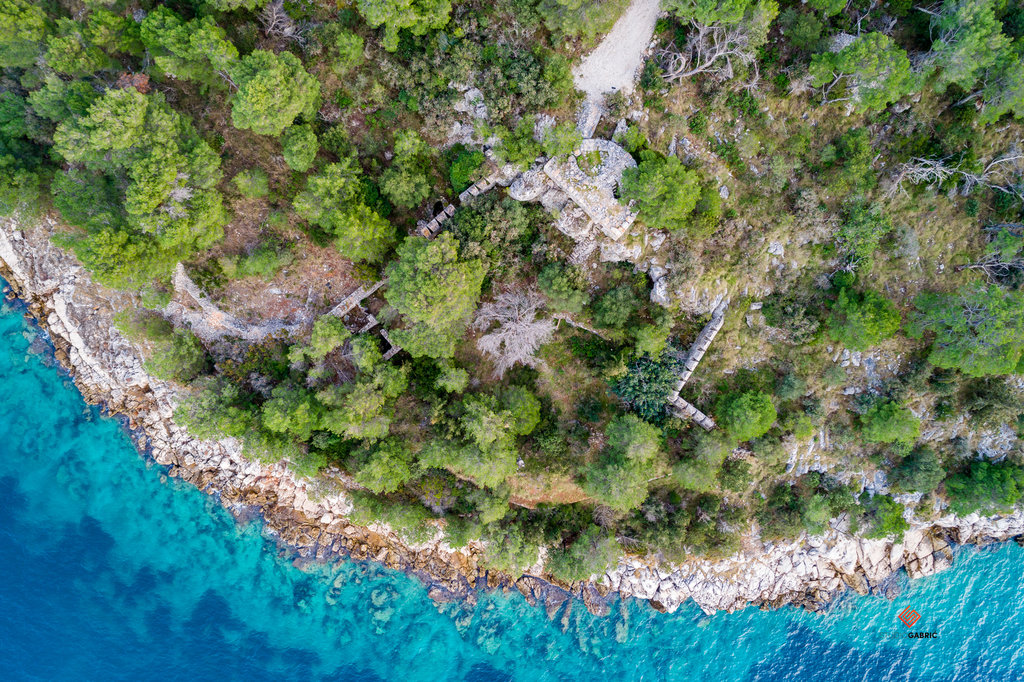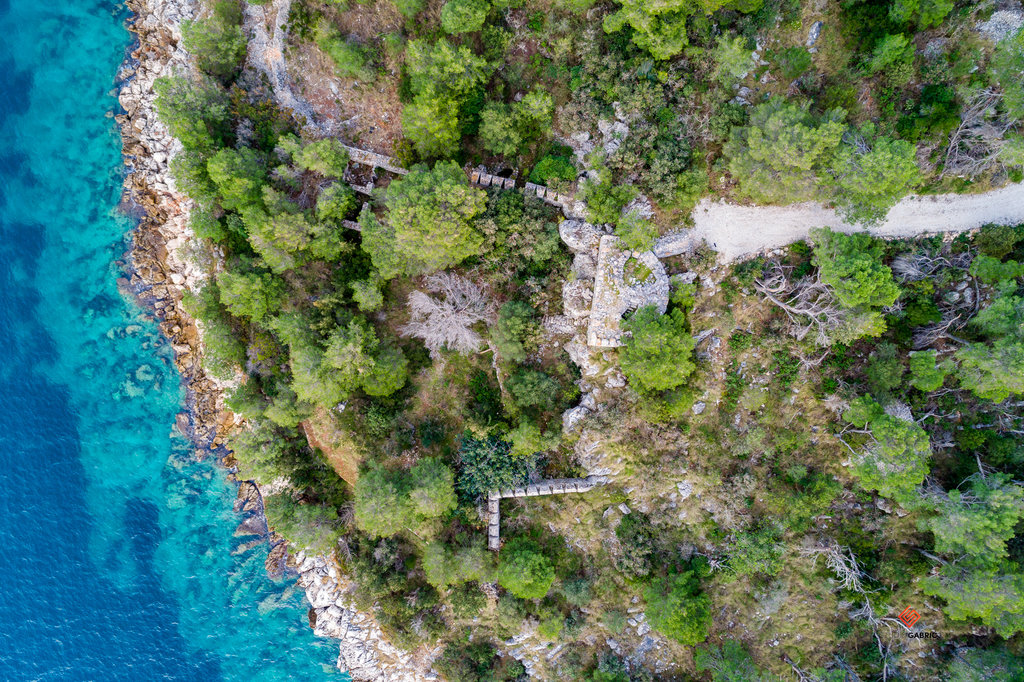The Battery Fortification is located at Cape Zaglav and was built in 1806, during the French administration.

In order to prevent the Russian fleet from invading the central Dalmatian islands, the French built fortifications and installed a battery of 4 cannons on the western Cape of Brač, and later reinforced it with 6 cannons. They commissioned 150 peasants from the island to build it because the French crew that came to Brač did not have enough people for its construction.
This maritime fort is the largest fortification on Brač and the locals traditionally call it Baterija (The Battery).
The fortification is in such condition that its entire ground plan is still intact. The shape is of an irregular pentagon with high, pointy defensive walls. The embankment has been built on its seaside. Inside the fortification, four chambers have been preserved, three of them in a row. The original entrance is on the northeast side and has some traces of reinforcement of the wall. Next to it is an unexplored underground entrance, a possible natural cave or pit. The main observatory was built on a large terrace, partly a natural rock, and can be reached via an arched staircase.
Baterija fortification was crucial in the defense against the French and the Russians and a very important strategic point during the Napoleonic Wars in the eastern Adriatic, as well as the last defense for Split and its surroundings.
In December of 1806, a naval battle ensued between the Russians and the French. A Russian reconnaissance vessel, brig Aleksandar was spotted in the vicinity by French soldiers. They alerted the command in Split. General Marmont ordered that the ship be attacked and captured. A small naval squadron was formed, consisting of three gunboats, one saragana called Napoleon, and one “trabakul” (typical Dalmatian sailboat).

However, the people of Brač were at the time unhappy with the reforms introduced by the French administration (efforts to take away nobility’s privileges, to abolish religious brotherhoods and give their properties to school system) and so they informed Ivan Skolavski, the commander of the Russian ship Aleksandar about the intentions of the French. Five signal fires were lit on the island in order to send information to Skolavski about the size of the French fleet which he used to ambush the enemy and attack first. The battle lasted three hours, one French gunship was sunk; ship Napoleon was heavily damaged, fled the battle, and finally sunk in the Split harbor.
Upon return from the battle, the Russian ship destroyed the French battery and this opened the way for the Russian navy onto the island of Brač. In an attempt to minimize the consequences of this defeat, general Marmont in his memoir completely left out information about the existence of the fortification at Cape Zaglav and wrote instead that the island was too vast to defend, that it had no forts and that for that reason he pulled back the few sailors and left Brač to the enemy.
The Russian occupation did not last long. In a peace treaty from Tilsit, in July 1807, Russians retreated from Brač and left it to the French again, who continued to rule Brač and Dalmatia for another six years.

French rule has left a strong impact on cultural and educational life, invaluable improvements in modernizing public administration as well as infrastructure.
Milna now focuses mainly on tourism, preserving this precious example of military architecture from the Napoleonic wars and a testament to good governance despite the conservatism and prejudice of the local population of that time.
Author: tz-milna.hr




